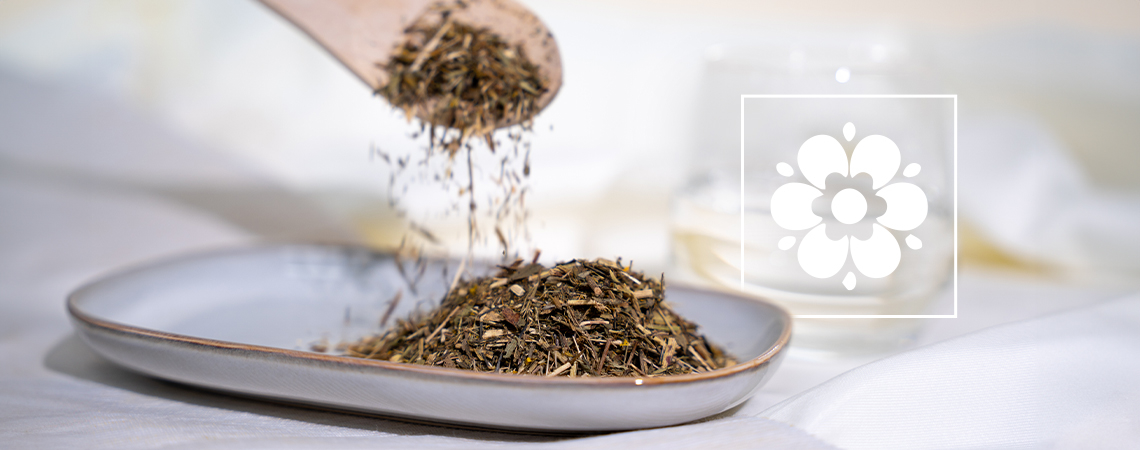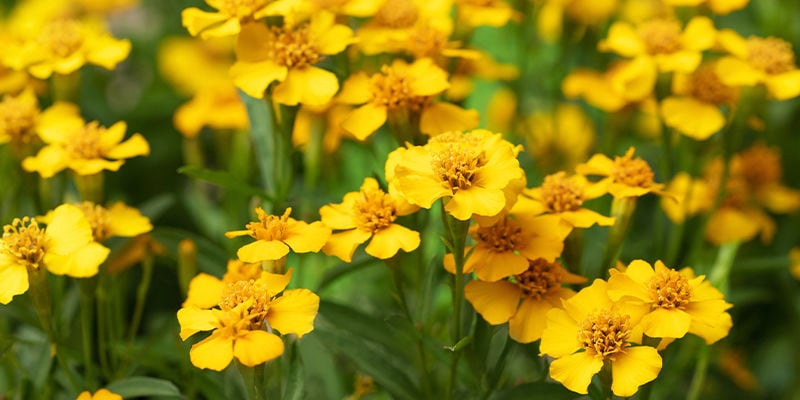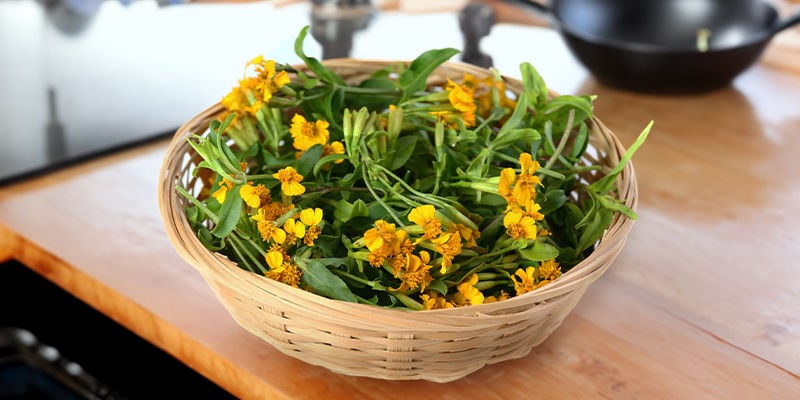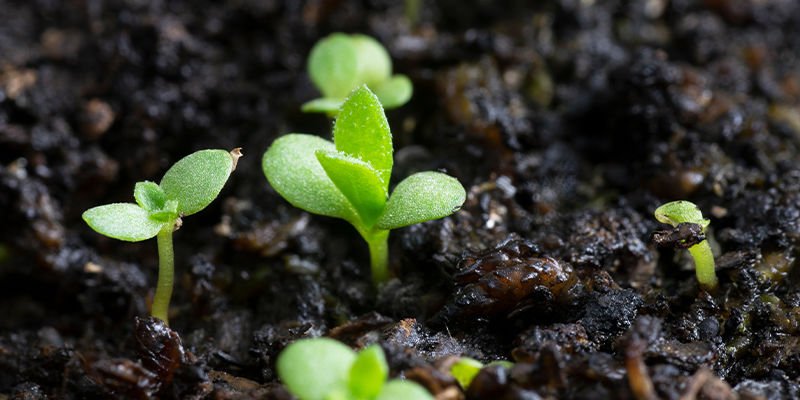
What Is Mexican Tarragon And How To Prepare It
Ever wanted to aid lucid dreaming with a plant that was also used to subdue sacrificial offerings before their hearts were pulled out? If so, keep reading. We break down everything you need to know about Tagetes lucida, aka Mexican terragon.
Mexican tarragon is used as a culinary alternative to tarragon. But it also has a diverse history of usage in Aztec culture, where, among other uses, it helped to sedate people before they were sacrificed. It’s also said to improve lucidity when ingested fresh and in higher quantities.
Here, we look into this plant and explore how it can be used.
What is Mexican tarragon?

Mexican tarragon, or Tagetes lucida, is a plant with yellow flowers from Central America—specifically Mexico. This plant has a long and varied history of use, ranging from a sedative for sacrificial victims to a herb for flavouring food. It’s also used as an aid for dream recall and lucid dreaming.
The plant can grow up to around 75cm tall and has a scent of anise or liquorice. Mexican tarragon is perennial and can grow tall or bushy, depending on the landrace.
History

This herb has a long history of traditional use with the Aztec peoples of Central America. Much of its usage was therapeutic, as it was, and still is, used to address the common cold and stomach ailments. It was also used as an incense, because the dried herb gives off a pungent and pleasurable aroma, which also works as an effective insect repellent.
Furthermore, the powder from the dried plant was blown into the faces of sacrificial victims as it was thought to help dull their senses. After this, they would have their hearts cut out, so we must hope that the tarragon did its job!
Beyond these holistic and sacrificial uses, Mexican tarragon was also always used for culinary purposes, due to its strong flavour.
Effects of Mexican tarragon

While Mexican tarragon is most commonly used to flavour food these days, it is thought that it does have some mental effects. As a psychotropic substance, it has hardly been studied, and so it’s hard to make claims about it. However, there is anecdotal evidence that suggests it has the ability to increase lucidity while waking.
The effects are said to be subtle, but present. Supposedly, sight and hearing gain an extra clarity, and users are able to be more present. The main method of ingestion to experience these effects is either drinking a tea made from fresh leaves or smoking the dried and powdered plant material.
Because of these effects, Mexican tarragon has become popular for people who practise lucid dreaming.
Lucid dreaming

This lucidity is thought to also affect people while they sleep, potentially improving dream recall and increasing the chances of becoming lucid. It doesn’t act as some sort of magic herb, though; in order to become lucid, users must still practise techniques that assist with this journey.
Still, Mexican tarragon is thought to make the process easier. The main potential benefit is improving dream recall, which is an important part of the process of learning to lucid dream. By recalling dreams each day, a person becomes better able to notice them while they are happening, eventually leading to full lucidity.
What dose of Mexican tarragon should you take?
As this plant is not widely used, it’s hard to say what doses people should use to get the desired effects. Some reports suggest taking 250mg, while others report that around 2,000mg is best. Given this discrepancy, we would suggest starting low and working your way up to find the dose that works best for you.
Fortunately, higher doses don’t appear to have adverse effects, so you shouldn’t worry about overdosing or inducing unpleasant psychological effects—but higher doses might upset your stomach somewhat.
How to prepare Mexican tarragon

Depending on what you want from Mexican tarragon, it should be prepared in different ways. It’s important to note that the active ingredients break down quickly outside of the fresh leaf, including in extracts and dried material.
It’s also worth noting that all parts of the plant contain the active ingredients associated with increased lucidity.
Therefore, if you want to experience the mental effects of this plant, then you should use it fresh. For culinary or incense purposes, dried plant material will work just as well.
Tea

A tea can be made using fresh or dried leaves and flowers—and other parts of the plant if you’ve grown it yourself.
To make a tea, chop the plant material up a little if you’re working with full-sized leaves and flowers, as this will aid the infusion of compounds into the tea. And don’t use boiling water, but rather water at around 80ºC, as water that’s too hot might damage some of the compounds.
Allow the tea to steep for between 5 and 10 minutes, depending on how strong you’d like it to be, and add honey or some other sweetener to improve the taste.
Cooking
When cooking with this herb, you can be fairly liberal with how you use it. You can use both the fresh and dried herb to cook with, but dried herb will store easily and always be at hand in your kitchen.
Incense
To make Mexican tarragon incense, you’ll need to:
- Harvest fresh leaves, flowers, and stems. Don’t cut it too short.
- Bundle a length of plant material together, and then tie it together using cotton twine. Tie it fairly tight, but not so compact that air can’t flow through it.
- Leave your bundle to air-dry for two to three weeks.
- Once you’re certain it’s fully dry, you can burn the end as your very own Mexican tarragon incense.
How to grow Mexican tarragon

Mexican tarragon is a very easy plant to grow. It can thrive in direct sunlight or light shade, but it does require a good amount of light to grow properly. The main requirement of this plant is well-drained soil. If it sits in water, the roots of this plant can rot easily, as it evolved to grow in arid and dry environments.
An interesting feature of Mexican tarragon is that if the lateral branches touch the ground while growing, they will put out roots and anchor themselves to the ground. It can tolerate drought well, but will produce far more flowers if it is watered regularly.
You can harvest leaves throughout the growing season, as they will grow back, and you should harvest everything before the petals drop from the flowers in autumn. While this plant is perennial, it should be grown as an annual outside of its natural latitude, as it won’t survive the winters. Therefore, once autumn arrives, you can uproot the entire plant and hang it to dry. All parts can be used.
FAQ: Mexican Tarragon
- ❓What flavour does Mexican tarragon have?
- Mexican tarragon has a similar flavour to anise and liquorice.
- ❓Is Mexican tarragon good for the skin?
- No. Normal tarragon (Artemesia dracunculus L.), not Mexican tarragon, is said to be good for skin.
- ❓Is Mexican tarragon better fresh or dried?
- Mexican tarragon can be used for culinary purposes, both fresh and dried. However, to gain the mental effects of this plant, it should be used fresh.
Mexican tarragon: Tasty, and great for dreaming
Mexican tarragon’s main use in the world today is as a herb for cooking, where it has a flavour similar to anise and liquorice. However, it is also said to increase lucidity, both when awake and asleep, if consumed fresh and in high quantities. Experiment with it for yourself to unlock everything this plant has to offer.
-
 3 min
February 26, 2018
What Is African Dream Root And How Do You Prepare It?
Up until recently, the use of this flower root was only a tradition amongst a South African ethnic group. Everyone experiences the Silene capensis a little different but some reported effects are...
3 min
February 26, 2018
What Is African Dream Root And How Do You Prepare It?
Up until recently, the use of this flower root was only a tradition amongst a South African ethnic group. Everyone experiences the Silene capensis a little different but some reported effects are...
-
 3 min
May 17, 2017
Sleep Masks And Lucid Dreaming
A sleep mask can be a great help with relaxation and meditation, and if we want a good night’s sleep. But did you know that a sleep mask can also be an excellent lucid dreaming aid? There are...
3 min
May 17, 2017
Sleep Masks And Lucid Dreaming
A sleep mask can be a great help with relaxation and meditation, and if we want a good night’s sleep. But did you know that a sleep mask can also be an excellent lucid dreaming aid? There are...








 United States
United States








